Story and photos by Anita Westervelt, Texas Master Naturalist
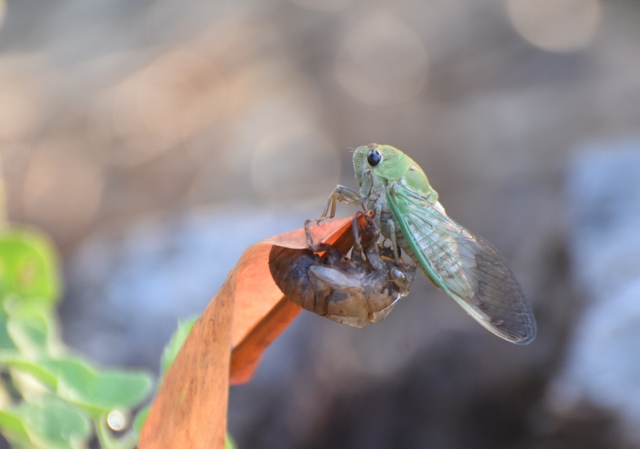
A Texas cicada, the Superb Dog-days cicada, Neotibicen superbus, is so named because it makes its annual appearance during the dog days of summer — those hot, sultry days when it is most hot and humid.
Historically, the dog days followed the heliacal rising of the star system Sirius (Sirius marks the astrological nose of Canis Major, the Greater Dog) which Greek and Roman astrology connected with heat, drought, sudden thunderstorms, lethargy, fever, mad dogs, and bad luck, according to the Internet’s Wikipedia.
Airless August nights are filled with high-pitched noises like whining buzz saws, a clamor that can be annoying and comforting all at the same time.
A “rapid clacky-clicking crescendo and fall” describes the song of the Superb Dog-day cicada, according to this website: http://www.insectsingers.com/ — where cicada songs from other parts of the world can be heard, like Borneo, New Zealand, India and points beyond.
Superb Dog-day cicadas are found in much of Texas and Oklahoma, and parts of Arkansas, Missouri, Kansas, New Mexico and Louisiana.
Periodic cicadas spend most of their lives as underground nymphs, emerging in huge numbers only after 13 or 17 years. Annual cicadas are species that emerge every year. They have life-cycles that can vary from one to nine or more years as underground larvae; their emergence above ground as adults is not synchronized, so some appear every year.
Adult dog-day cicadas are nearly two inches long from nose to wing tip. They live five to six weeks. Two other cicadas found in the Valley are a tiny cicada three-quarters of an inch long, called little mesquite cicada, Pacarina puella, and scrub cicada, Diceroprocta delicate, that measures one and a quarter inch.
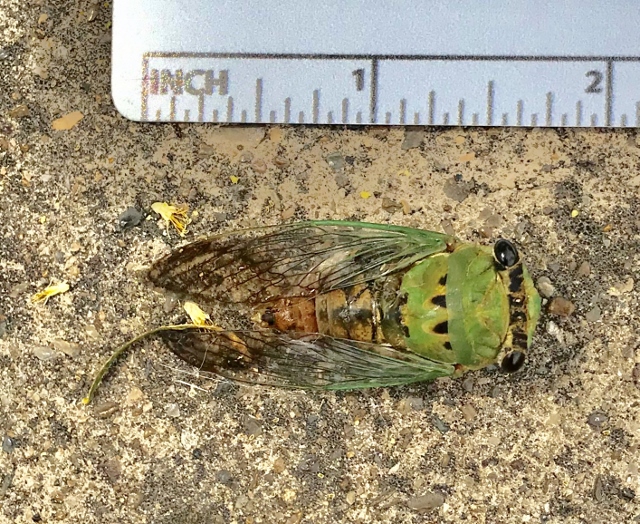
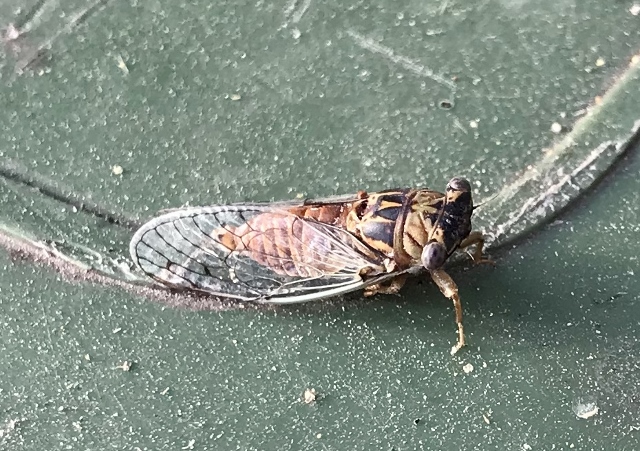
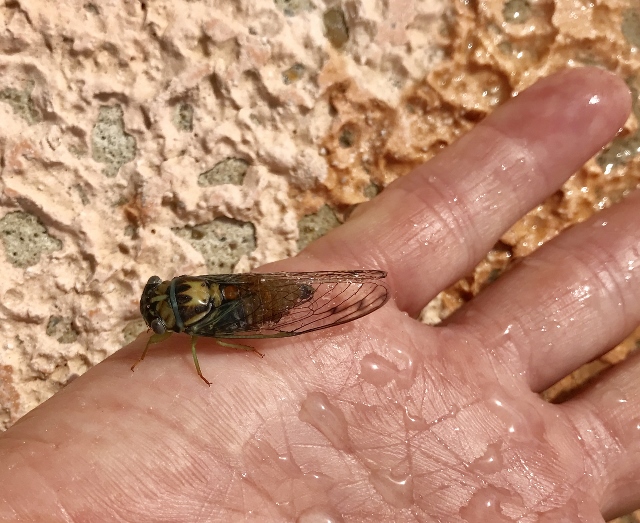
Diceroprocta delicate Cicada
There are more than 190 varieties of cicadas in North America, and more than 3,390 varieties of cicadas around the world.
For those who like to know collective nouns, a group of cicadas is called a cloud or plague — although locust cause harm to crops and vegetation, cicadas do not. Adult cicadas do not eat.
Most cicadas sing at night to avoid predators. A group of singing cicadas is called a chorus. Each species has a different song. Some calls can be heard up to a mile away, according to “National Geographic.”
The buzzing sound cicadas make is a mating call. Male cicadas vibrate a white, drum like membrane on their abdomens called a tymbal. After mating, female cicadas lay their eggs in slits that they cut in tree branches. The eggs hatch in about six to 10 weeks, the larvae drop to the ground and burrow underground where they suck liquid from plant roots.
A cicada exoskeleton is more prevalent than the cicada itself. On the rare occasion an adult is found drying in the early morning, if picked up, it will make a frenetic buzzing whereby eliciting a quick release from the offending hand. The cicada will make a couple of jump-starts and then wing its way into the morning sky. Cicadas do not sting or bite.
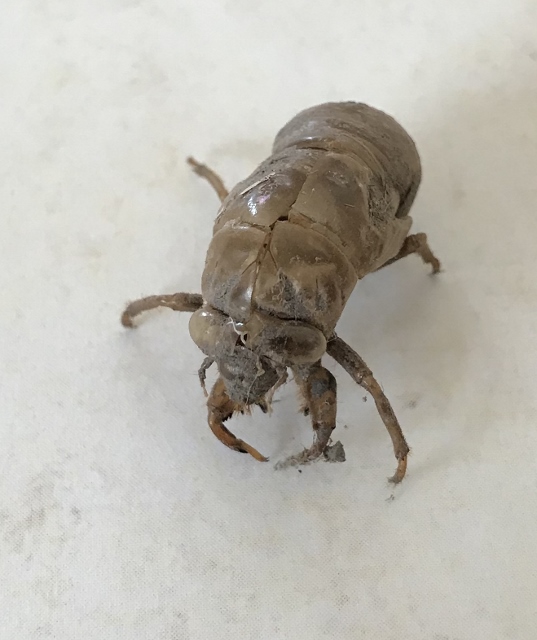
Websites helpful in writing this article include Sky and Telescope, Cicada Mania, Dave’s Garden, Bugguide, Live Science and (Texas Insects) tamu.edu.